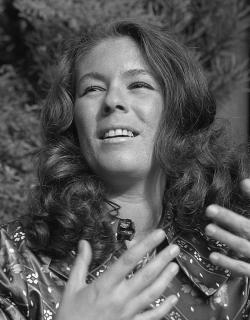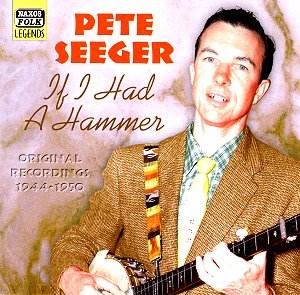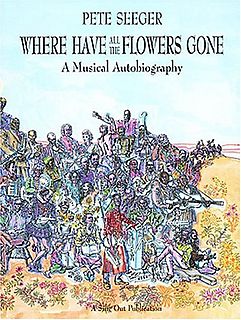Alice's Restaurant Massacree

This song is called Alice's Restaurant, and it's about Alice, and the
(continua)
(continua)
inviata da gio'
The Bell
THE BELL (PARANOIA NETWORK MIX)
written by Stephan Smith and DJ Spooky that subliminal kid
performed by Stephan Smith, Pete Seeger & DJ Spooky
produced by Paul D Miller
engineered by Chris Flam
from the ep "The Bell"
Stephan Smith - The Bell: Un nouveau Dylan est-il né?
Après le 11 septembre et l'Afghanistan, peu de chanteurs américains sont sortis du rang pour protester. Pourtant, il semble qu'un digne successeur de Bob Dylan et Woody Guthrie soit apparu. Son nom: Stephan Smith. Sa chanson: The Bell.
Jef Maes
15-01-2003
d'après cette page
«Bien des musiciens craignent qu'en ce moment, leurs chansons contre la guerre ne soient perçues comme antipatriotiques.» C'est Damon Kukowski, fondateur des «Musiciens pour la Paix», qui parle.1 Mais, il y a quelques semaines, Stephan Smith a lancé sa chanson The Bell, qui a connu un succès inattendu. Il a travaillé en compagnie de Dean... (continua)
written by Stephan Smith and DJ Spooky that subliminal kid
performed by Stephan Smith, Pete Seeger & DJ Spooky
produced by Paul D Miller
engineered by Chris Flam
from the ep "The Bell"
Stephan Smith - The Bell: Un nouveau Dylan est-il né?
Après le 11 septembre et l'Afghanistan, peu de chanteurs américains sont sortis du rang pour protester. Pourtant, il semble qu'un digne successeur de Bob Dylan et Woody Guthrie soit apparu. Son nom: Stephan Smith. Sa chanson: The Bell.
Jef Maes
15-01-2003
d'après cette page
«Bien des musiciens craignent qu'en ce moment, leurs chansons contre la guerre ne soient perçues comme antipatriotiques.» C'est Damon Kukowski, fondateur des «Musiciens pour la Paix», qui parle.1 Mais, il y a quelques semaines, Stephan Smith a lancé sa chanson The Bell, qui a connu un succès inattendu. Il a travaillé en compagnie de Dean... (continua)
"Oh where are you going?" said the man at his desk
(continua)
(continua)
Johnny Has Gone For A Soldier [Siúil a ruin; Shule Aroon]
anonimo
![Johnny Has Gone For A Soldier [Siúil a ruin; Shule Aroon]](img/upl/battleboyne.jpg)
Ballata tradizionale irlandese (ca. 1690)
Irish traditional folk-ballad (ab. 1690)
Versione americana: tradizionale XVIII secolo
American version: traditional, 18th century
Johnny Has Gone For A Soldier, nota anche col titolo gaelico “proprio” di Siúil a ruin e con quello in grafia anglicizzata di Shule Aroon (o, in alcune versioni americane, Shule Agrah) trae le sue origini più antiche dalla Battaglia del Boyne, combattuta il 1° luglio 1690 presso Drogheda, in Irlanda.
“La battaglia del Boyne (1 luglio 1690) fu lo scontro decisivo della guerra guglielmita d'Irlanda. Giacomo II Stuart era sbarcato nel marzo dell'anno precedente nella cattolica Irlanda nel tentativo di farne la base di partenza per la riconquista del regno d'Inghilterra. Sostenuto da una forza di spedizione francese al comando del duca di Lauzun e dei suoi sostenitori (detti giacobiti) raccolse attorno a se un numerosissimo... (continua)
Irish traditional folk-ballad (ab. 1690)
Versione americana: tradizionale XVIII secolo
American version: traditional, 18th century
Johnny Has Gone For A Soldier, nota anche col titolo gaelico “proprio” di Siúil a ruin e con quello in grafia anglicizzata di Shule Aroon (o, in alcune versioni americane, Shule Agrah) trae le sue origini più antiche dalla Battaglia del Boyne, combattuta il 1° luglio 1690 presso Drogheda, in Irlanda.
“La battaglia del Boyne (1 luglio 1690) fu lo scontro decisivo della guerra guglielmita d'Irlanda. Giacomo II Stuart era sbarcato nel marzo dell'anno precedente nella cattolica Irlanda nel tentativo di farne la base di partenza per la riconquista del regno d'Inghilterra. Sostenuto da una forza di spedizione francese al comando del duca di Lauzun e dei suoi sostenitori (detti giacobiti) raccolse attorno a se un numerosissimo... (continua)
I wish I were on yonder hill
(continua)
(continua)
I Come and Stand at Every Door
[1962]
Da una poesia di Nâzım Hikmet
traduzione inglese di Jeannette Turner
Musica di James Waters (1954)
(adattata alla ballata tradizionale delle Isole Orcadi The Great Silkie Of Sule Skerrie (Child #113)
From a poem by Nâzım Hikmet
English translation by Jeannette Turner
Music by James Waters (1954)
(fitted to the Orkney folk ballad The Great Silkie Of Sule Skerrie (Child #113)
Questa straordinaria poesia di Hikmet ebbe il genio di metterla in musica (non a caso!) Pete Seeger, nel 1962; la versione più conosciuta è quella registrata quattro anni dopo dai Byrds di Roger McGuinn nell'album "5th Dimension"... non credo mi metta i brividi solo perché penso a cinque anni fa nelle Marche, a Joyce Lussu, a persone care e perdute; credo che abbia una forza e una bellezza da sciogliere trent'anni di banchisa...
(Alex Agus dalla mailing list "Fabrizio")
Ran's poem Kız Çocuğu (The Girl... (continua)
Da una poesia di Nâzım Hikmet
traduzione inglese di Jeannette Turner
Musica di James Waters (1954)
(adattata alla ballata tradizionale delle Isole Orcadi The Great Silkie Of Sule Skerrie (Child #113)
From a poem by Nâzım Hikmet
English translation by Jeannette Turner
Music by James Waters (1954)
(fitted to the Orkney folk ballad The Great Silkie Of Sule Skerrie (Child #113)
Questa straordinaria poesia di Hikmet ebbe il genio di metterla in musica (non a caso!) Pete Seeger, nel 1962; la versione più conosciuta è quella registrata quattro anni dopo dai Byrds di Roger McGuinn nell'album "5th Dimension"... non credo mi metta i brividi solo perché penso a cinque anni fa nelle Marche, a Joyce Lussu, a persone care e perdute; credo che abbia una forza e una bellezza da sciogliere trent'anni di banchisa...
(Alex Agus dalla mailing list "Fabrizio")
Ran's poem Kız Çocuğu (The Girl... (continua)
I come and stand at every door
(continua)
(continua)
Mothers, Daughters, Wives
The Greenham Common Women's Peace Camp Songbook
[1982]
Lyrics and music by Judy Small
Testo e musica di Judy Small
"I wrote this song for my mother (though not all its details are true for her), and for all the women of her generation who, it seemed to me, spent a large part of their lives waiting for their menfolk to come home from war. They were the women whose work during World War II showed us that women could do any kind of job and were perfectly capable of independence. For that example, although they had little choice at the time, my generation is grateful to them and I hope we have learned the lesson well. This remains my favourite of all my songs." (Judy Small Songbook 53)
"Ho scritto questa canzone per mia madre (sebbene non tutti i particolari siano esatti a suo proposito), e per tutte le donne della sua generazione che, mi sembrava, hanno trascorso larga parte della loro... (continua)
[1982]
Lyrics and music by Judy Small
Testo e musica di Judy Small
"I wrote this song for my mother (though not all its details are true for her), and for all the women of her generation who, it seemed to me, spent a large part of their lives waiting for their menfolk to come home from war. They were the women whose work during World War II showed us that women could do any kind of job and were perfectly capable of independence. For that example, although they had little choice at the time, my generation is grateful to them and I hope we have learned the lesson well. This remains my favourite of all my songs." (Judy Small Songbook 53)
"Ho scritto questa canzone per mia madre (sebbene non tutti i particolari siano esatti a suo proposito), e per tutte le donne della sua generazione che, mi sembrava, hanno trascorso larga parte della loro... (continua)
The first time it was fathers,
(continua)
(continua)
Blowin' in the Wind

[1962]
Lyrics and music by Bob Dylan
Testo e musica di Bob Dylan
Album: The Freewheelin' Bob Dylan [1963]
Fu portata al successo da Peter, Paul and Mary, ma è una di quelle canzoni che, davvero, hanno cantato tutti. Compresa Joan Baez. E compreso, in una sua non memorabile interpretazione, Mino Reitano...
«In 1962, Dylan said of the song's background: "I still say that some of the biggest criminals are those that turn their heads away when they see wrong and they know it's wrong. I'm only 21 years old and I know that here's been too many wars...You people over 21 should know better." All that he prefers to add by way of commentary now is: "The first way to answer these questions in the song is by asking them. But lots of people have to first find the wind."»
(dalle note dell'album)
"Nel 1962, Dylan disse a commento della canzone "Dico ancora che alcuni dei più grandi criminali... (continua)
Lyrics and music by Bob Dylan
Testo e musica di Bob Dylan
Album: The Freewheelin' Bob Dylan [1963]
Fu portata al successo da Peter, Paul and Mary, ma è una di quelle canzoni che, davvero, hanno cantato tutti. Compresa Joan Baez. E compreso, in una sua non memorabile interpretazione, Mino Reitano...
«In 1962, Dylan said of the song's background: "I still say that some of the biggest criminals are those that turn their heads away when they see wrong and they know it's wrong. I'm only 21 years old and I know that here's been too many wars...You people over 21 should know better." All that he prefers to add by way of commentary now is: "The first way to answer these questions in the song is by asking them. But lots of people have to first find the wind."»
(dalle note dell'album)
"Nel 1962, Dylan disse a commento della canzone "Dico ancora che alcuni dei più grandi criminali... (continua)
How many roads must a man walk down
(continua)
(continua)
inviata da CCG/AWS Staff
If I Had A Hammer

[1949]
Testo di Lewis Hays
Musica di Pete Seeger
Lyrics by Lewis Hays
Music by Pete Seeger
If I Had A Hammer nasce nel 1949 come una canzone integrazionista, composta dal famoso cantautore folk Pete Seeger e incisa da Peter Paul & Mary. Il brano predica la tranquilla convivenza tra bianchi e neri, e per questo motivo parecchie stazioni nel sud degli USA si rifiutano di trasmetterla.
If I Had A Hammer
Produced by Tim Brachocki
If I Had A Hammer presents a sixty-year historical overview of significant struggles for increased democracy and social justice in the United States through the life and music of Pete Seeger. Interviews with Seeger and others involved in these various peoples' movements form the backbone of the program. Seeger's narrative ties the documentary together as he relates his life and music to the movements examined. The union, civil rights, peace, women's... (continua)
Testo di Lewis Hays
Musica di Pete Seeger
Lyrics by Lewis Hays
Music by Pete Seeger
If I Had A Hammer nasce nel 1949 come una canzone integrazionista, composta dal famoso cantautore folk Pete Seeger e incisa da Peter Paul & Mary. Il brano predica la tranquilla convivenza tra bianchi e neri, e per questo motivo parecchie stazioni nel sud degli USA si rifiutano di trasmetterla.
If I Had A Hammer
Produced by Tim Brachocki
If I Had A Hammer presents a sixty-year historical overview of significant struggles for increased democracy and social justice in the United States through the life and music of Pete Seeger. Interviews with Seeger and others involved in these various peoples' movements form the backbone of the program. Seeger's narrative ties the documentary together as he relates his life and music to the movements examined. The union, civil rights, peace, women's... (continua)
If I had a hammer
(continua)
(continua)
A Hard Rain's A-Gonna Fall

[1962]
Testo e musica di Bob Dylan
Words and music by Bob Dylan
Dall'album / From the LP "The Freewhelin' Bob Dylan" (1963)
Una delle più celebri canzoni contro la guerra, non solo di Bob Dylan ma in assoluto.
Scritta al tempo della crisi dei missili a Cuba nell'ottobre del 1962, secondo molti si riferisce al fall-out atomico, la caduta come pioggia delle scorie radioattive in seguito all'esplosione di una atomica. Probabilmente, però, come sottolineato dallo stesso Dylan in più di un'occasione, la canzone trascende questa semplice interpretazione pur confermandola, per assurgere ad un significato più universale e ricco di sottintesi biblici e cabalistici (come l'uso di numerazioni inusitate tipiche della Bibbia: "Ho inciampato sul fianco di dodici montagne nebbiose, ho camminato e strisciato su sei strade tortuose, ho camminato nel mezzo di sette tristi foreste, sono stato di fronte... (continua)
Testo e musica di Bob Dylan
Words and music by Bob Dylan
Dall'album / From the LP "The Freewhelin' Bob Dylan" (1963)
Una delle più celebri canzoni contro la guerra, non solo di Bob Dylan ma in assoluto.
Scritta al tempo della crisi dei missili a Cuba nell'ottobre del 1962, secondo molti si riferisce al fall-out atomico, la caduta come pioggia delle scorie radioattive in seguito all'esplosione di una atomica. Probabilmente, però, come sottolineato dallo stesso Dylan in più di un'occasione, la canzone trascende questa semplice interpretazione pur confermandola, per assurgere ad un significato più universale e ricco di sottintesi biblici e cabalistici (come l'uso di numerazioni inusitate tipiche della Bibbia: "Ho inciampato sul fianco di dodici montagne nebbiose, ho camminato e strisciato su sei strade tortuose, ho camminato nel mezzo di sette tristi foreste, sono stato di fronte... (continua)
Oh, where have you been, my blue-eyed son?
(continua)
(continua)
Where Have all the Flowers Gone

[1956]
Lyrics and music by Pete Seeger
to the tune of Drill Ye Tarriers Drill
Testo e musica di Pete Seeger
sull'aria di Trill Ye Tarriers Drill
Paroles et musique de Pete Seeger
sur la mélodie de Drill Ye Tarriers Drill
Verses 4 and 5 composed and added by Joe Hickerson
Le strofe 4 e 5 sono state composte e aggiunte da Joe Hickerson
Les couplets 4 et 5 ont été composés et ajoutés par Joe Hickerson
Italiano
English
Français
Il testo di questa, che è tra le più celebri canzoni contro la guerra di ogni tempo, è di Pete Seeger, anche se le versioni più note sono probabilmente quella cantata da Joan Baez in inglese e, soprattutto, Sagt mir wo die Blumen sind, la versione tedesca interpretata da Marlene Dietrich.
Secondo la sua stessa ammissione, Seeger si ispirò ad un brano del Placido Don dello scrittore russo Michajl Šolochov [Михайл Шoлoхoв] (che ottenne per quest'opera il... (continua)
Lyrics and music by Pete Seeger
to the tune of Drill Ye Tarriers Drill
Testo e musica di Pete Seeger
sull'aria di Trill Ye Tarriers Drill
Paroles et musique de Pete Seeger
sur la mélodie de Drill Ye Tarriers Drill
Verses 4 and 5 composed and added by Joe Hickerson
Le strofe 4 e 5 sono state composte e aggiunte da Joe Hickerson
Les couplets 4 et 5 ont été composés et ajoutés par Joe Hickerson
Italiano
English
Français
Il testo di questa, che è tra le più celebri canzoni contro la guerra di ogni tempo, è di Pete Seeger, anche se le versioni più note sono probabilmente quella cantata da Joan Baez in inglese e, soprattutto, Sagt mir wo die Blumen sind, la versione tedesca interpretata da Marlene Dietrich.
Secondo la sua stessa ammissione, Seeger si ispirò ad un brano del Placido Don dello scrittore russo Michajl Šolochov [Михайл Шoлoхoв] (che ottenne per quest'opera il... (continua)
Where have all the flowers gone,
(continua)
(continua)
×
![]()

Testo e Musica di Arlo Guthrie
Lyrics and Music by Arlo Guthrie
Arlo Guthrie presentò a Woodstock una chilometrica canzone-racconto presa in giro del servizio militare nel 1966 diventata poi un film da lui stesso interpretato.
Lascio ad altri il compito di tradurla.... :-) (Gio')
"Alice's Restaurant Massacree" (comunemente chiamata Alice's Restaurant) è la più famosa canzone di Arlo Guthrie. È una canzone che racconta una storia, basata su avvenimenti veramente accaduti, che dura 18 minuti e 20 secondi ed occupa infatti l'intera facciata A dell'album di debutto di Arlo Guthrie, del 1967, anch'esso intitolato Alice's Restaurant.
La canzone fu adattata nel 1969 in un film, anch'esso intitolato Alice's Restaurant, con lo stesso Guthrie nella parte di sé stesso e Patricia Quinn nella parte di Alice, mentre alla vera Alice era riservato un cameo.
La canzone è una pungente satira... (continua)